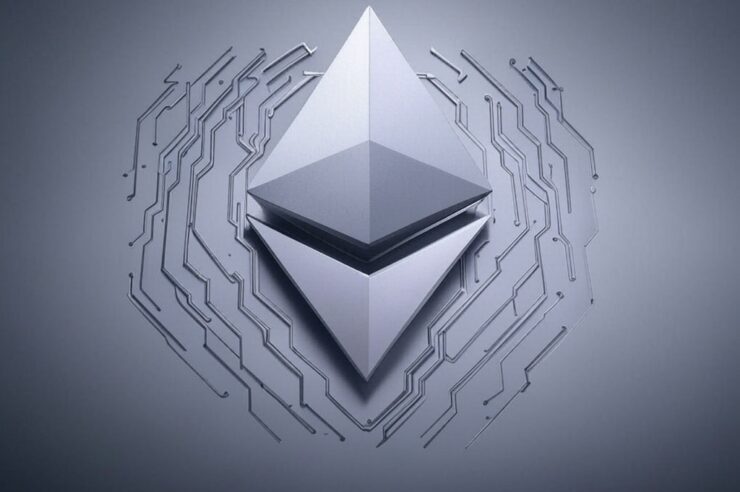Disclaimer : This post is for educational purpose only. Not financial advice. Do your own research. We do not give buy/sell recommendations.
Ethereum Layer 2s: The Unsung Heroes Saving Your Crypto Wallet
Ever tried using Ethereum and felt like you were stuck in digital quicksand—transactions crawling along while gas fees drain your soul (and your bank account)? Yeah, me too. Ethereum’s awesome, don’t get me wrong, but it’s been like a packed highway during rush hour for way too long. Enter Layer 2s (L2s)—the extra lanes we’ve all been begging for, swooping in to make things faster, cheaper, and, dare I say, actually fun again. Let’s break down what these bad boys are, how they work, and why they’re the real MVPs of the blockchain world.
What’s the Deal with Layer 2s?
Picture Ethereum as a bustling metropolis with one main road—Layer 1. It’s the heart of the operation, but when everyone’s trying to send transactions at once, it’s gridlock city. Layer 2s are like the city planners who said, “Screw it, let’s build some side streets and overpasses!” They take a ton of the traffic—aka your transactions—off the main road, handle them elsewhere, and then report back with a quick “All good!” to Layer 1. The result? Speedy transactions and fees that won’t make you cry into your ramen.
There are two main types of Layer 2s: rollups and sidechains. Rollups are like those super-efficient friends who pack all your errands into one trip, while sidechains are more like Ethereum’s chill cousins who do their own thing but still show up to family dinner. Both are here to save the day, and honestly, we don’t deserve them.
Breaking Down the Layer 2 Squad
Let’s meet the crew, shall we? This is where it gets juicy (and maybe a little geeky, but hang tight—I’ll keep it human).
Rollups: The Transaction Batching Champs
Rollups are the overachievers of Layer 2s. They grab a bunch of transactions, process them off-chain, and then toss a quick summary back to Layer 1 like, “Here’s the CliffsNotes, deal with it.” There are two flavors:
-
Optimistic Rollups: These are the “vibes-only” rollups. They assume everything’s cool unless someone yells, “Hold up!” There’s a little challenge window—think of it like a blockchain referee checking the replay. If no one complains, it’s golden. Big shots like Optimism and Arbitrum run this game, and they’re so easy to use, developers are basically throwing parties over it.
-
Zero-Knowledge Rollups (ZK Rollups): These are the mysterious tech wizards. They use some mind-bending math (zero-knowledge proofs—don’t ask me to explain it, I barely passed algebra) to prove transactions are legit without spilling the tea. It’s like showing you’re old enough to buy beer without flashing your license. zkSync and StarkNet are killing it here—fast, private, and perfect for anyone who’s paranoid about their crypto moves.
Sidechains: Ethereum’s Cool Cousins
Sidechains are like Ethereum’s relatives who moved out to the suburbs and built their own mini-empire. They’ve got their own rules, handle tons of transactions, and connect back to Layer 1 via a bridge—like a family group chat that keeps everyone in the loop. Polygon’s the king of this scene, cranking out thousands of transactions per second while Layer 1’s still sipping its coffee. Downside? They’re not quite as locked down as rollups, but for stuff like gaming or DeFi, they’re clutch.
Why Should You Give a Hoot About Layer 2s?
Layer 2s are basically the fairy godmothers of Ethereum, turning it from a clunky pumpkin into a shiny carriage. Back in the day, sending a transaction could cost you $50 in gas fees—enough to make you question why you ever got into crypto. Now? Layer 2s have slashed those costs so you can swap tokens, snag NFTs, or play blockchain games without needing to sell your firstborn.
Of course, nothing’s perfect. Optimistic rollups make you wait a week to withdraw funds—great if you’re patient, torture if you’re not. ZK rollups are speedier but a little fiddly to set up. And sidechains? They’re fast and cheap, but if their security takes a hit, you might be sweating. Still, these are small potatoes compared to the days of “$20 to send $5” nonsense. Layer 2s are the IT crew keeping Ethereum humming, and I’m here for it.
Layer 2s in 2025: They’re Kind of a Big Deal
Flash forward to 2025, and Layer 2s aren’t just sidekicks anymore—they’re stealing the spotlight. Arbitrum’s hogging over half the cash locked in Layer 2s (that’s “total value locked” for you nerds), proving it’s the people’s champ. Polygon’s gone full ZK-mode, making it a jack-of-all-trades for gaming and DeFi. And Optimism? Its user base exploded by 190% in early 2023, and it’s still climbing.
This isn’t just geek trivia—it’s a sign Layer 2s are the future. Most transactions are already happening on these side streets, with Layer 1 chilling like a vault for the big stuff. It’s like Ethereum finally hired a personal assistant, and the results are chef’s kiss.
The Layer 2 All-Stars
Thinking of dipping your toes into Layer 2 waters? Here’s the VIP list:
-
Arbitrum: The transaction beast. Perfect for snagging NFTs without breaking the bank.
-
Polygon: The multitasker. Gaming, DeFi—you name it, Polygon’s got it covered.
-
zkSync: The stealth mode pro. Fast and private, for when you want to keep things on the down-low.
Pick your poison based on what you’re into—speed, savings, or secrecy. They’re all winners in my book.
Wrapping It Up: Layer 2s Are the Real Deal
Layer 2s are basically giving Ethereum a turbo boost, making it fast, affordable, and dare I say, approachable for us regular folks. They’re not perfect—there’s still some tinkering to do—but they’ve already turned Ethereum from a sluggish jalopy into a sleek ride. Next time you’re zipping through a transaction for pennies in seconds, give a little nod to Layer 2s. They’re the unsung heroes making crypto life bearable again.
And if you’ve ever rage-quit a $100 gas fee, rejoice—those days are fading fast. Layer 2s have your back, and honestly, they deserve a round of applause. Or at least a beer.
Disclaimer : This post is for educational purpose only. Not financial advice. Do your own research. We do not give buy/sell recommendations.


